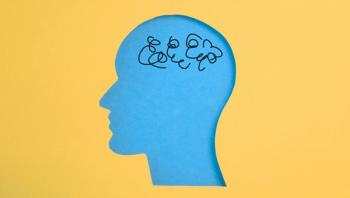
- Vol 37, Issue 11
- Volume 37
- Issue 11
Exploring the Relationship Between Posttraumatic Stress and Chronic Pain
The high co-occurrence of chronic pain and PTSD and their possible entanglement underline the importance of conducting assessment for both conditions.
SPECIAL REPORT: PAIN & PSYCHIATRY
Chronic pain is a massive and costly health problem1-5 and among the main non-fatal causes of years lived with disability worldwide.6 In the United States alone, an estimated 50 million adults are suffering from chronic pain.7 Huge efforts have been made in past decades to better understand, prevent, and treat chronic pain. A common link between chronic pain and posttraumatic stress disorder (PTSD) has emerged as a result of this research. Many individuals with chronic pain suffer from PTSD due to the incidents that caused trauma-related distress, but chronic pain is also commonly found in individuals with PTSD as their primary disorder. Hence, a better understanding of this comorbidity may be important for the treatment of both disorders.
Common co-occurrence
In individuals with
In a recent systematic review of studies on refugees with PTSD, chronic pain complaints were very common. In some studies, almost all participants reported such complaints.13 Furthermore, several studies have found that higher levels of PTSD symptomatology in patients with chronic pain are associated with higher levels of
Potential explanations
Several theoretical possibilities have been put forward to explain the comorbidity of PTSD and pain. These have mainly focused on shared, predisposing vulnerabilities, or on how the conditions may affect one another.
Shared vulnerabilities
Asmundson et al suggest that underlying predisposing factors or traits cause the development of both PTSD and chronic pain.11 In particular,
Mutual maintenance
Maybe the most-cited model in the field is the Mutual Maintenance Model.20 This model suggests that chronic pain and PTSD maintain and exacerbate one another through 7 mechanisms. Attentional and reasoning biases toward potentially threatening stimuli as well as catastrophizing are suggested to lead to heightened expectations, overestimations, and selective and negative interpretations of both pain-evoking and fear-evoking stimuli. Furthermore, pain may serve as a traumatic cue, evoking fear and PTSD intrusion and hyperarousal, and vice versa. Avoidant coping styles, depressive symptoms, and fatigue are also potentially intertwined and could lead to physical deconditioning, inactivity, disability—all preventing fear extinction. PTSD-related anxiety may also include pain perception directly. Finally, cognitive overload characterizes both conditions, and it leads to limited capacity to employ adaptive coping strategies.
In a similar vein, Liedl and Knaevelsrud21 developed the Perpetual Avoidance Model, which suggests that PTSD symptomatology begins early post-trauma. Here, dysfunctional cognitions, intrusive symptoms, hyperarousal, avoidance behavior, and inactivity all fuel one another in a circular process. The model posits that pain may be initiated or increased as a function of hyperarousal, leading to reinforced fear-avoidance behavior and inactivity. In addition, Jenewein and colleagues argued that fear-learning deficits and impaired capacity to inhibit fear in PTSD may contribute to increased pain perception, pain sensitivity, and fear responses to painful stimuli.22 This idea builds on classical fear conditioning theory, in which fear-learning deficits cause an over-association of pain cues and prevent adaptive safety learning. Incorrect interpretations of bodily symptoms can lead to reinforcement and catastrophizing.22 As a final note, pain issues can also arise due to anxiety-related tensions.
Pain sensitivity and PTSD
In assessing the impact of
Different coping mechanisms may be related to dissociation and derealization. Whereas dissociation can lead to a reduction of conscious attention toward bodily sensations and incoming stimuli such as pain, anxiety and fearful appraisals may lead to attentional bias toward painful stimuli and thereby a decreased pain threshold. Hence, it seems that accident-related trauma is linked to an anxious and sensitizing reaction, whereas combat-related trauma may lead to a dissociative and habituative reaction. While differences in pain processing can be identified in experimental studies, subjective pain reporting most often points in the direction of a more severe symptom profile in relation to pain, disability, and distress when comorbid PTSD and pain persist.
The biological mechanisms behind pain sensitization and the development of chronic pain are complex but include regulatory mechanisms in the hypothalamic-pituitary-adrenal axis, inflammatory processes, immune system suppression, and fatigue.24 Also, more complex interpersonal traumas such as physical and emotional abuse associated with war or sexual assault, for example, are of such a pervasive nature that the ability to trust others can be severely damaged, resulting in attachment insecurities that further increase the risk of developing long-term pain problems.25
Assessments and challenges
The high co-occurrence of chronic pain and PTSD and their possible entanglement underline the importance of conducting assessment for both PTSD and pain. Unfortunately, symptom overlap between pain and PTSD makes assessment a challenging task. In particular, symptoms related to the DSM-5 PTSD criterion D and criterion E (
Keeping the aforementioned challenges in mind, there are several PTSD-screening tools (
Similarly, there are good and short instruments for pain complaints. Identification of psychological red flags in patients seeking care for musculoskeletal pain problems or PTSD can be useful in treatment planning, as these are often modifiable.
Case example: mutual maintenance mechanisms
“Jane” is a 38-year-old woman. Ever since a severe car crash, her life has not been the same. She has struggled with chronic pain, and she feels worn out and jumpy. Despite her physiotherapist’s best efforts, Jane continues to struggle to engage in the exercise intervention, and she complains about the exercises making her pain worse.
In psychotherapy, she starts to realize that being “worn out” and “jumpy” are related to the PTSD. Several examples of the integration of the conditions become clear to her:
- She often reports that talking about the trauma increases pain intensity.
- She realizes that her struggle to take on physiotherapeutic treatment was not only due to fear of pain and risk of re-injury, but that pain flare-ups return her to the trauma. In this way, her PTSD has made her highly hesitant to engage and made her feel overwhelmed.
- She begins to realize that both pain and PTSD affect her resources, which are split up between them. On days where PTSD symptoms are severe, she has fewer resources to handle pain, which in turn gets worse.
Interventions
Interventions in these comorbid cases first and foremost need to be biopsychosocial in nature. Unfortunately, there are very few randomized controlled studies that target comorbid PTSD and pain, making it difficult to devise strong recommendations on best treatments for comorbid PTSD and chronic pain. Although there are good evidence-based treatments for each condition, it is still debated whether both conditions need to be targeted sequentially, in parallel, or by an integrated intervention.10
If a sequential approach is chosen, it is important to take into consideration which disorder to treat first. As a rule of thumb, the primary disorder needs to be treated first. However, as previously outlined, the untreated disorder may worsen the other; and it is not always evident which disorder is the primary—particularly not in cases where both conditions developed in parallel.
The parallel approach also poses some challenges. If treated by different providers, collaboration and treatment planning can be difficult. Moreover, the clinicians for each disorder need to make sure that the patient has the resources to engage in both treatments. While an integrated intervention may overcome some of these challenges, there is no exact intervention guidelines for how to integrate the interventions.
Evidence points in the direction of integrating cognitive behavior therapy (CBT) techniques in the treatment of comorbid PTSD28 and chronic pain.29 However, one size may not fit all. The complexity of the trauma needs to be considered. In accident-related trauma (in which the primary symptoms may be musculoskeletal pain with elevated levels of arousal, catastrophizing, and pain-related fear avoidance beliefs), the vicious circle maintaining both pain and PTSD symptoms may be interrupted by interventions such as psychologically informed physiotherapy or an intervention with a cognitive behavioral focus on pain management and exposure to feared activities.30-31 Also, it has recently been shown that early interventions, including targeting PTSD hyperarousal symptoms and pain-related disability with a physiotherapist-led stress inoculation training intervention combined with physiotherapeutic exercise, was effective in reducing pain-related disability compared to exercises alone.32 For more complex interpersonal traumas, or when chronic pain and PTSD have persisted for years, specific and specialized intervention for both PTSD and chronic pain may be necessary for positive outcomes. With that said, the first step is to be aware of this prevalent co-occurrence of pain and PTSD, which requires a proper assessment of both conditions.
Of course, many other frequently comorbid disorders may further muddle the picture, both for assessment and treatment of both pain and PTSD. For example, many studies on PTSD and pain are conducted in military samples, who are also at increased risk of traumatic brain injuries (TBI) of varying severity. This phenomenon also is true for some type of accidents. There are some studies that show veterans with TBI and PTSD report more pain compared to veterans with either TBI or PTSD alone or neither of them.33,34
Chronic pain and PTSD are also associated with suicidal ideation and violent impulses in veterans despite the presence of TBI.35 While this triad remains largely unexplored, some relevant narrative reviews exist, as well as reflections on treatment (eg, Otis and colleagues36).
Various psychopharmacological agents can be used to treat comorbid PTSD and chronic pain, but there is limited research. Since such a discussion is beyond the scope of this piece, clinicians are encouraged to investigate for themselves.
Concluding discussion
We hope this article has shed light on the complexity of the comorbidity of chronic pain and PTSD and sparked an interest in some readers to pursue gaining knowledge on this to the future benefit of patients. We encourage clinicians to always have the comorbidity of pain and PTSD in mind when seeing patients with either chronic pain or PTSD, and to be aware of symptom overlap when screening for possible PTSD in chronic pain. Finally, being aware of the nature of the traumatic event is important for treatment planning. If pain and PTSD is due to the same traumatic event, it may be relevant to consider an integrated or parallel treatment, while complex PTSD due to interpersonal trauma or events dating years back in time may require specific trauma-focused intervention in its own.
Dr Ravn is assistant professor in a combined position at Department of Psychology, University of Southern Denmark, and at Specialized Hospital for Polio and Accident Victims. Dr Andersen is associate professor at Department of Psychology, University of Southern Denmark.
References
1. Andrew R, Derry S, Taylor RS, et al. The costs and consequences of adequately managed chronic non-cancer pain and chronic neuropathic pain. Pain Prac. 2014;14:79-94.
2. Barham L. Economic burden of chronic pain across Europe. J Pain Palliat Care Pharmacother. 2012;26:70-72.
3. Gaskin DJ, Richard P. The economic costs of pain in the United States. J Pain. 2012;13(8):715-724.
4. Mills SEE, Nicolson KP, Smith BH. Chronic pain: a review of its epidemiology and associated factors in population-based studies. Br J Anaesth. 2019;123(2):
e273-e283.
5. Phillips CJ. The cost and burden of chronic pain. Rev Pain. 2009;3(1):2-5.
6. GBD 2016 Disease and Injury Incidence and Prevalence Collaborators. Global, regional, and national incidence, prevalence, and years lived with disability for 328 diseases and injuries for 195 countries, 1990-2016: a systematic analysis for the Global Burden of Disease Study 2016 [published correction appears in Lancet. 2017 Oct 28;390(10106):e38]. Lancet. 2017;390(10100):1211-1259.
7. Dahlhamer J, Lucas J, Zelaya C, et al. Prevalence of chronic pain and high-impact chronic pain among adults — United States. MMWR Morb Mortal Wkly Rep. 2018;67:1001-1006.
8. Siqveland J, Hussain A, Lindstrøm JC, Ruud T, Hauff E. Prevalence of Posttraumatic Stress Disorder in Persons with Chronic Pain: A Meta-analysis. Front Psychiatry. 2017;8:164.
9. Fishbain DA, Pulikal A, Lewis JE, Gao J. Chronic pain types differ in their reported prevalence of posttraumatic stress disorder (PTSD) and there is consistent evidence that chronic pain is associated with PTSD: An evidence-based structured systematic review. Pain Med. 2017;2016;18:711.
10.Otis JD, Keane TM, Kerns RD, Monson C, Scioli E. The development of an integrated treatment for veterans with comorbid chronic pain and posttraumatic stress disorder. Pain Med. 2009;10(7):1300-1311.
11. Asmundson GJ, Coons MJ, Taylor S, Katz J. PTSD and the experience of pain: research and clinical implications of shared vulnerability and mutual maintenance models. Can J Psychiatry. 2002;47(10):930-937.
12. Otis JD, Keane TM, Kerns RD. An examination of the relationship between chronic pain and post-traumatic stress disorder. J Rehabil Res Dev. 2003;
40(5):397-405.
13. Rometsch-Ogioun El Sount C, Windthorst P, Denkinger J, et al. Chronic pain in refugees with posttraumatic stress disorder (PTSD): A systematic review on patients’ characteristics and specific interventions. J Psychosom Res. 2019;118:83-97.
14. Åkerblom S, Perrin S, Rivano Fischer M, McCracken LM. The impact of PTSD on functioning in patients seeking treatment for chronic pain and validation of the Posttraumatic Diagnostic Scale. Int J Behav Med. 2017;24(2):249-259.
15. Pedler A, Sterling M. Patients with chronic whiplash can be subgrouped on the basis of symptoms of sensory hypersensitivity and posttraumatic stress. Pain. 2013;154(9):1640-1648.
16. Ravn SL, Vaegter HB, Cardel T, Andersen TE. The role of posttraumatic stress symptoms on chronic pain outcomes in chronic pain patients referred to rehabilitation. J Pain Res. 2018;11:527-536.
17. Ruiz-Párraga GT, López-Martínez AE. The contribution of posttraumatic stress symptoms to chronic pain adjustment. Health Psychol. 2014;33:958-967.
18. Asmundson GJ, Katz J. Understanding the co-occurrence of anxiety disorders and chronic pain: state-of-the-art. Depress Anxiety. 2009;26(10):888-901.
19. Asmundson GJG, Abrams MP, Collimore KC. Pain and anxiety disorders. In: Zvolensky MJ, Smits JAJ, eds. Health Behaviors and Physical Illness in Anxiety and its Disorders: Contemporary Theory and Research. Springer; 2008:207-235.
20. Sharp TJ, Harvey AG. Chronic pain and posttraumatic stress disorder: mutual maintenance?. Clin Psychol Rev. 2001;21(6):857-877.
21. Liedl A, Knaevelsrud C. Chronic pain and PTSD: The Perpetual Avoidance Model and its treatment implications. Torture. 2008;18(2):69-76.
22. Jenewein J, Erni J, Moergeli H, et al. Altered pain perception and fear-learning deficits in subjects with posttraumatic stress disorder. J Pain. 016;17(12):1325-1333.
23.Tesarz, J, Baumeister D, Andersen TE, Vægter HB. (2020). Pain perception and processing in individuals with posttraumatic stress disorder: a systematic review with meta-analysis. Pain Reports. In press.
24. Vachon-Presseau E. Effects of stress on the corticolimbic system: implications for chronic pain. Prog Neuropsychopharmacol Biol Psychiatry. 2018;87(Pt B):216-223.
25. Andersen TE, Lahav Y, Defrin R, et al. Attachment security and pain — The disrupting effect of captivity and PTSS. J Psychosom Res. 2015;79:471-476.
26. Bunzli S, Maujean A, Andersen TE, Sterling M. Whiplash Patients’ Responses on the Impact of Events Scale-R: Congruent With Pain or PTSD Symptoms? Clin J Pain. 2019;35(3):229-237.
27. Ravn SL, Eskildsen NB, Johnsen AT, et al. There’s nothing broken. You’ve had a whiplash, that’s it: A qualitative study of comorbid posttraumatic stress disorder and whiplash-associated disorders. Pain Med. 2020;21:1676-1689.
28. American Psychological Association. Clinical Practice Guideline for the Treatment of Posttraumatic Stress Disorder (PTSD) in Adults. 2012:1-119. Accessed October 12, 2020.
29. Williams AC, Eccleston C, Morley S. Psychological therapies for the management of chronic pain (excluding headache) in adults. Cochrane Database Syst Rev. 2012;11(11):CD007407.
30. Robinson JP, Theodore BR, Dansie EJ, Wilson HD, Turk DC. The role of fear of movement in subacute whiplash-associated disorders grades I and II. Pain. 2013;154(3):393-401.
31. Sullivan M, Adams H, Ellis T, et al. Treatment-related reductions in catastrophizing predict return to work in individuals with post-traumatic stress disorder. J Appl Biobehav Res. 2017;22(1):e12087.
32. Sterling M, Smeets R, Keijzers G, Warren J, Kenardy J. Physiotherapist-delivered stress inoculation training integrated with exercise versus physiotherapy exercise alone for acute whiplash-associated disorder (StressModex): a randomized controlled trial of a combined psychological/physical intervention. Br J Sports Med. 2019;53(19):1240-1247.
33. Balba NM, Elliott JE, Weymann KB, et al. Increased sleep disturbances and pain in veterans with comorbid traumatic brain injury and posttraumatic stress disorder. J Clin Sleep Med. 2018;14(11):1865-1878.
34. Stojanovic MP, Fonda J, Fortier CB, et al. Influence of Mild Traumatic Brain Injury (TBI) and Posttraumatic Stress Disorder (PTSD) on Pain Intensity Levels in OEF/OIF/OND Veterans. Pain Med. 2016;17(11):2017-2025.
35. Blakey SM, Wagner HR, Naylor J, et al. Chronic Pain, TBI, and PTSD in Military Veterans: A Link to Suicidal Ideation and Violent Impulses?. J Pain. 2018;
19(7):797-806.
36. Otis JD, McGlinchey R, Vasterling JJ, Kerns RD. Complicating factors associated with mild traumatic brain injury: Impact on pain and posttraumatic stress disorder treatment. J Clin Psychol Med Settings. 2011;18(2):145-154.❒
Articles in this issue
about 5 years ago
Discharge Planningabout 5 years ago
Patients Like Telehealth, But Barriers Still Persistabout 5 years ago
Nitrous Oxide and Alexander Hamilton’s Grandsonabout 5 years ago
Psychiatry’s Role in the Management of Chronic Painabout 5 years ago
Sleep Disturbances as a Sequalae of Chronic Painabout 5 years ago
What’s in a Name: The Problem with Zero Suicideabout 5 years ago
Treating Dementia Patients in the Time of COVIDabout 5 years ago
Can Exercise Decrease Mortality Risk in Patients With Depression?about 5 years ago
Combination Therapy for Treatment-Resistant Schizophrenia?Newsletter
Receive trusted psychiatric news, expert analysis, and clinical insights — subscribe today to support your practice and your patients.











